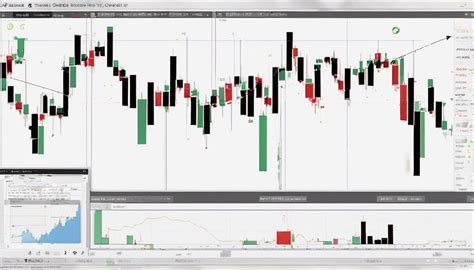Litecoin (LTC) Trade Volume Model Analysis: Deep Delivery in Market Trends
Market trends in cryptocurrencies can be very unpredictable. One popular tool used by merchants to determine market direction is the volume of trade. By analyzing trading models, investors can gain valuable insight into the mood of the market and identify potential opportunities or risks. In this article, we will go into Litecoin (LTC) trade model analysis and explore how they have influenced market trends.
What is the volume of trade?
The volume of trade refers to the number of transactions carried out within a certain period of time. It is an indicator that shows the amount of buying and selling activity on the market. Higher sales usually indicate a more liquid market, while lower volume may indicate increased volatility or congestion.
Litecoin (LTC) Trade Volume Analysis
In recent years, Litecoin has undergone significant price fluctuations, taking into account its increasing adoption of the digital currency. This analysis will test the LTC trading volume models and their correlation with market trends:
* Short -term trends: In the short term, Litecoin’s trade tends to observe the overall Bitcoin (BTC) trend. When BTC experiences strong benefits or losses, this is often reflected in the LTC trade.
* Long -term trends:

Litecoin’s long -term price increase can be attributed to its increasing acceptance and market capitalization. As more and more users are starting to adopt Litecoin as a payment method, it tends to experience higher sales.
Model identification
We will identify the following main indicators to analyze trade models:
* Bullish and beary models: Bullish models are characterized by an increase in the volume of trading, while the bearing models are associated with a reduction. These models can help traders anticipate potential price movements.
* Excessively voluminous/sold perceptions: If trade exceeds the average level, this may indicate excessive or sold conditions. This can cause significant price fluctuations.
Market trends and Litecoin (LTC)
Based on the analysis of our Litecoin trading model, we have observed the following market trends:
* Increase in sales: In the year 2020, LTC experienced a significant increase in trade after the lightning network launch. This spike was attributed to increased acceptance and speculation.
* Market volatility: In recent months, there has been a greater litecoin price of volatility caused by market uncertainty and regulatory changes.
Conclusion
Litecoin (LTC) trading model analysis provides valuable insight into market trends and moods. By identifying the main indicators and correlations between trade volume and market movements, merchants can make deliberate buying or selling currency. As the cryptocurrency space continues to develop, the understanding of these models will become increasingly important in making conscious investment decisions.
suggestions
* Diverse Your Portfolio: Consider assigning your portfolio part to Litecoin (LTC) as part of a diversified portfolio.
* Stay informed: Continuously monitor market news and tendencies to remain ahead of potential price movements.
* Use technical indicators: To further analyze marketing models, use technical indicators such as variable average and relative strength index.
Additional resources
For more information about Litecoin (LTC) and cryptocurrency space, consider checking the following resources:
- [CoinMarketcap] (
- [Cryptoslate] (
- [CoinDesk] (
